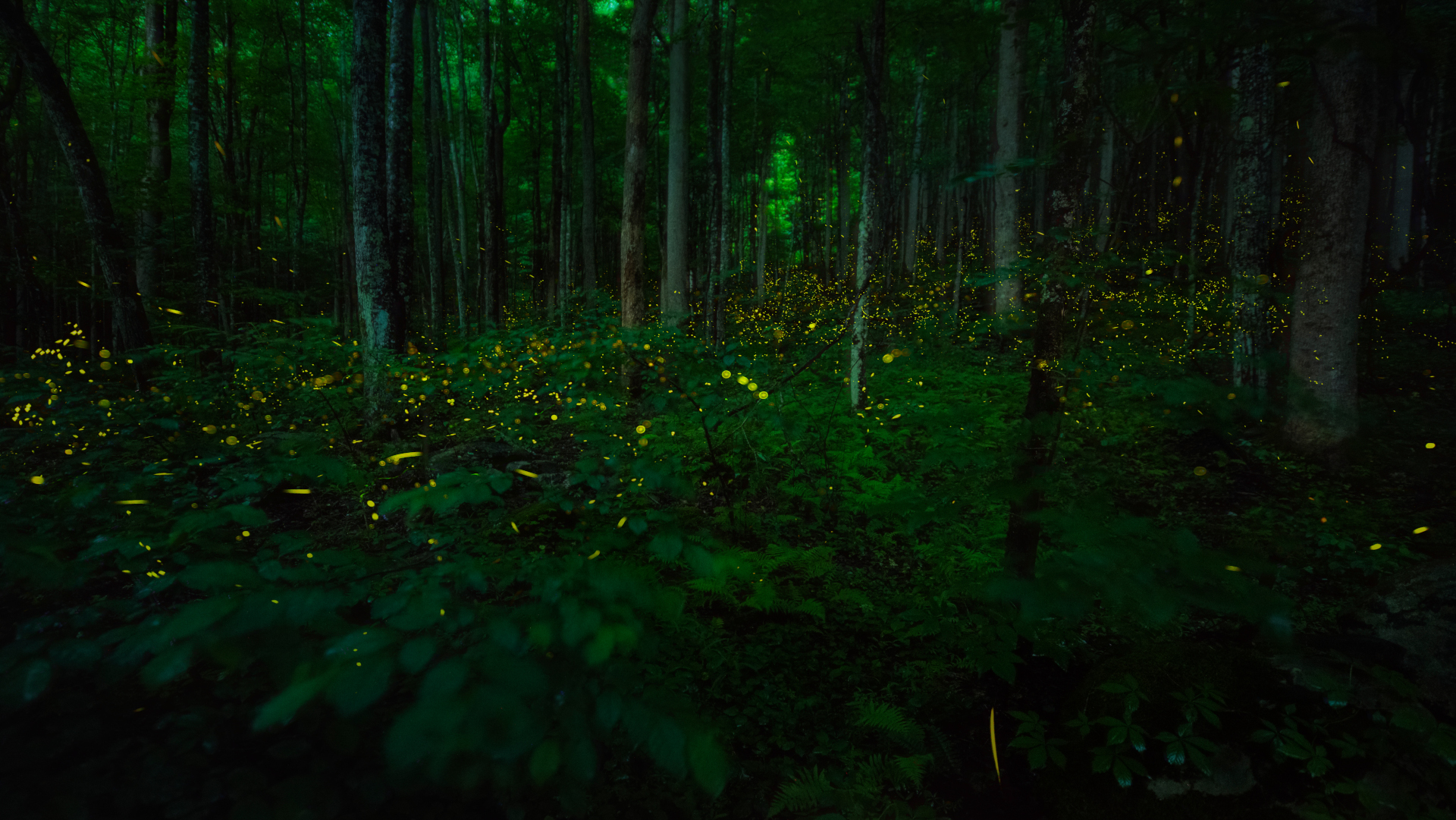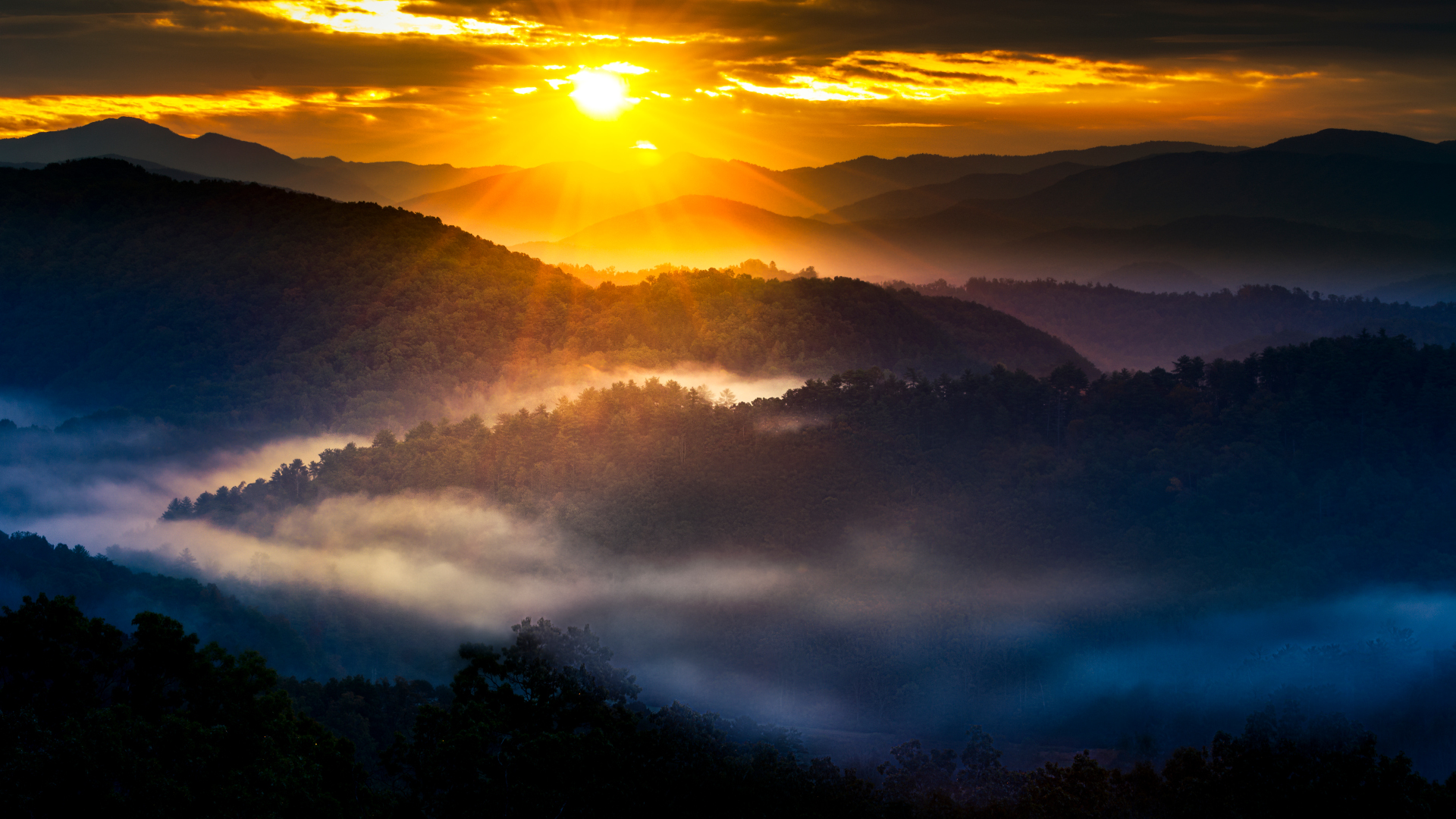Firefly season is coming in Great Smoky Mountains National Park
The most beloved residents of Great Smoky Mountains National Park are preparing to put on one of Earth's most spectacular seasonal light shows

It’s just about firefly season at Great Smoky Mountains National Park.
Every spring, the glowing lights of thousands of synchronous fireflies light up parts of Great Smoky Mountains National Park near Elkmont, Tennessee.
The Photinus carolinus fireflies are one of at least 19 species of fireflies that live in the park, but they’re the only ones in North America that synchronize their flashing light patterns during mating season. The synchronized blinking pattern lasts for hours as the fireflies search for their mates. Needless to say, this makes for quite the spectacle when watching from the porch of your favorite tent or kicking back in your best camping chair at camp.
“Seeing these fireflies for the first time is magical,” Orit Peleg, a physicist at the University of Colorado Boulder who studies synchronous fireflies, told National Geographic recently. “The entire forest is flashing together in unison.”
Every year, the National Park Service hosts an eight-day event at the peak of mating season, which typically lasts about two weeks around the end of May or the beginning of June. The festival has become so popular that the park had to create a lottery system to distribute tickets. The lottery opened on April 30 and will close in a few days.
Fireflies (also commonly known as lightning bugs) are a type of beetle. They take a year or two to mature from larvae, but they typically live for only about 21 days as adults. While in the larval stage, the insects feed on snails and smaller insects. Once they transform into their adult form, they do not eat. They just fly around, flash their lights and mate.
Advnture Newsletter
All the latest inspiration, tips and guides to help you plan your next Advnture!
The fireflies have organs under their abdomens that combine oxygen with a chemical called luciferin to produce a yellow, green, or even blue glow. But each species has a unique flashing pattern that plays an important role in firefly courtship, helping individuals identify their mates.
The production of light by living organisms is called bioluminescence. Aside from fireflies, certain species of fungus, fish, shrimp, jellyfish, plankton, glowworm, gnat, snail, and springtail are known to produce some kind of light.

Bioluminescence involves highly efficient chemical reactions that result in the release of particles of light with little or no emission of heat. Fireflies combine the chemical luciferin and oxygen with the enzyme luciferase in their lanterns (part of their abdomens) to make light. The light produced is referred to as a "cold" light, with nearly 100 percent of the energy given off as light. In contrast, the energy produced by an incandescent light bulb - such as those found in the best headlamps - is approximately 10 percent light and 90 percent heat.
No one is sure why the fireflies flash synchronously. Competition between males may be one reason: they all want to be the first to flash. Or perhaps if the males all flash together they have a better chance of being noticed, and the females can make better comparisons.
Each species of firefly has a characteristic flash pattern that helps its male and female individuals recognize each other. Most species produce a greenish-yellow light; one species has a bluish light. The males fly and flash and the usually stationary females respond with a flash.
But the window to see the firefly display is a brief one. Mating season for fireflies typically lasts about two weeks around the beginning from late May to early June when evening temperatures in the forest have risen above 50 degrees.
Brian is an award-winning journalist, photographer and podcaster who has written for Runner’s World, The Times, Outside, Men’s Journal, Trail Runner, Triathlete and Red Bulletin. He's also the author of several books, including Kicksology: The Hype, Science, Culture and Cool of Running Shoes. He lives in Boulder, Colorado, and loves to run, bike, hike, camp, ski and climb mountains. He has wear-tested more than 1,500 pairs of running shoes, completed four Ironman triathlons, as well as numerous marathons and ultra-distance running races.

